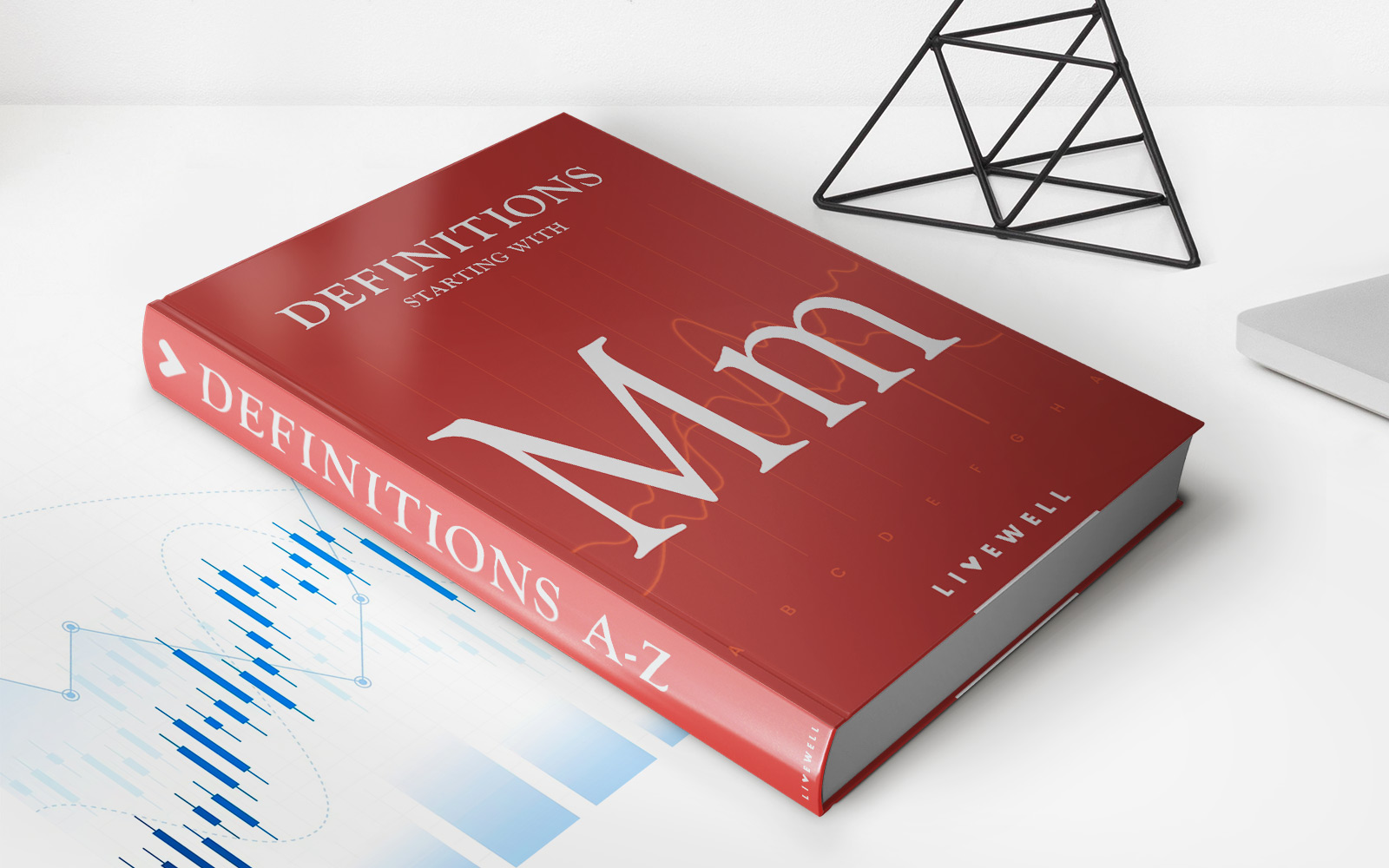Home>Finance>What Is A Characteristic Of Non-Installment Credit


Finance
What Is A Characteristic Of Non-Installment Credit
Published: February 21, 2024
Learn about the characteristics of non-installment credit in finance and how it impacts your financial situation. Understand the implications and make informed decisions.
(Many of the links in this article redirect to a specific reviewed product. Your purchase of these products through affiliate links helps to generate commission for LiveWell, at no extra cost. Learn more)
Table of Contents
Introduction
Non-installment credit is a fundamental aspect of the financial landscape, playing a pivotal role in the borrowing and lending activities that underpin economic transactions. Understanding the characteristics of non-installment credit is crucial for individuals, businesses, and financial institutions alike. This form of credit represents a flexible and often essential financial tool, offering distinct advantages and considerations compared to traditional installment credit.
Non-installment credit encompasses a diverse array of financial arrangements, ranging from credit cards to lines of credit, each with its unique features and implications. By delving into the defining characteristics of non-installment credit, individuals can make informed decisions about their financial strategies, while financial professionals can gain insights into the intricacies of this credit modality.
Exploring the nuances of non-installment credit sheds light on its advantages, disadvantages, and the potential impact on creditworthiness. Whether individuals are considering utilizing non-installment credit for personal needs or businesses are evaluating its role in their financial operations, a comprehensive understanding of its characteristics is indispensable.
In the subsequent sections, we will delve into the definition of non-installment credit, elucidate its core characteristics, provide real-world examples, and evaluate its advantages and disadvantages. By the end of this exploration, readers will have a comprehensive grasp of non-installment credit and its implications in the realm of personal and commercial finance.
Definition of Non-Installment Credit
Non-installment credit, also known as revolving credit, refers to a type of credit arrangement in which the borrower has a maximum credit limit and can utilize funds up to that limit without a fixed repayment schedule. Unlike installment credit, where the borrower receives a lump sum and repays it in fixed installments over a specified period, non-installment credit allows for flexibility in borrowing and repaying, often with varying interest rates based on the outstanding balance.
One of the defining features of non-installment credit is its revolving nature, meaning that as the borrower repays the borrowed amount, the available credit is replenished, allowing for ongoing use within the predetermined limit. This characteristic distinguishes non-installment credit from traditional loans or mortgages, which have a finite term and a fixed repayment schedule.
Common examples of non-installment credit include credit cards, lines of credit, and home equity lines of credit (HELOCs). Credit cards, in particular, are ubiquitous in modern financial transactions, offering a convenient and readily accessible form of non-installment credit for consumers. With credit cards, users can make purchases or obtain cash advances up to their credit limit, with the flexibility to repay the borrowed amount in full or make minimum payments while carrying a balance, subject to interest charges.
Furthermore, non-installment credit often involves variable interest rates, which can fluctuate based on market conditions or the borrower’s creditworthiness. This dynamic aspect of non-installment credit introduces an element of uncertainty regarding the cost of borrowing, as the interest accrued is directly linked to the outstanding balance and prevailing interest rates.
In essence, non-installment credit represents a dynamic and adaptable form of borrowing that offers convenience and flexibility to borrowers, albeit with distinct considerations and potential implications for their financial well-being. Understanding the nature of non-installment credit is essential for making informed decisions regarding its utilization and managing the associated financial responsibilities.
Characteristics of Non-Installment Credit
Non-installment credit exhibits several key characteristics that distinguish it from traditional installment credit and shape its role in the financial landscape. These features encompass the dynamic nature of borrowing, the flexibility in repayment, and the impact on credit utilization and financial planning.
- Revolving Nature: One of the primary characteristics of non-installment credit is its revolving nature. Unlike installment credit, which involves a fixed loan amount and predetermined repayment schedule, non-installment credit allows borrowers to use funds up to a specified credit limit, with the ability to replenish the available credit as they repay the borrowed amount. This revolving structure provides ongoing access to funds, making it a versatile financial tool for various needs.
- Flexibility in Repayment: Non-installment credit offers flexibility in repayment, allowing borrowers to make minimum payments while carrying a balance, pay the entire outstanding amount, or choose varying repayment amounts within the credit limit. This flexibility provides borrowers with the option to manage their cash flow and financial obligations based on their individual circumstances and budgetary constraints.
- Variable Interest Rates: Non-installment credit often entails variable interest rates, which can fluctuate based on market conditions, the borrower’s creditworthiness, or other factors. Unlike fixed-rate installment loans, the interest accrued on non-installment credit is directly tied to the outstanding balance, introducing variability in the cost of borrowing and influencing the overall financial implications for the borrower.
- Credit Utilization Impact: The utilization of non-installment credit, particularly credit cards, can impact a borrower’s credit utilization ratio, a key component of credit scoring. Maintaining high balances relative to the credit limit can negatively affect credit scores, underscoring the importance of prudent credit management and responsible borrowing practices when utilizing non-installment credit.
- Convenience and Accessibility: Non-installment credit, especially in the form of credit cards, offers unparalleled convenience and accessibility, enabling users to make purchases, handle emergencies, and manage day-to-day expenses with ease. The widespread acceptance of credit cards and the availability of lines of credit contribute to the seamless integration of non-installment credit into personal and business financial activities.
These characteristics collectively define non-installment credit as a dynamic and adaptable financial instrument that caters to diverse borrowing needs while necessitating prudent financial management and awareness of its implications on creditworthiness and financial stability.
Examples of Non-Installment Credit
Non-installment credit encompasses a spectrum of financial products and arrangements, each offering distinct features and applications tailored to the borrowing and spending requirements of individuals and businesses. These examples illustrate the diverse manifestations of non-installment credit and its prevalence in modern financial transactions.
- Credit Cards: Perhaps the most ubiquitous form of non-installment credit, credit cards provide users with a revolving line of credit that can be utilized for purchases, cash advances, and other transactions. Cardholders can carry a balance from month to month, subject to interest charges, and have the flexibility to repay the borrowed amount in varying increments, making credit cards a versatile financial tool for everyday expenses and larger purchases.
- Lines of Credit: Personal lines of credit and business lines of credit offer borrowers access to a predetermined credit limit, from which they can draw funds as needed. Unlike traditional installment loans, lines of credit allow for ongoing borrowing and repayment, with interest accruing on the outstanding balance. This flexibility makes lines of credit suitable for managing fluctuating expenses and addressing short-term liquidity needs.
- Home Equity Lines of Credit (HELOCs): HELOCs leverage the equity in a borrower’s home to provide a revolving line of credit, often used for home improvements, debt consolidation, or other large expenditures. HELOCs offer homeowners the flexibility to borrow against their home equity as needed, with the option to repay and reuse the available credit over the term of the arrangement.
- Retail Store Credit Accounts: Many retail establishments offer store-branded credit accounts that provide customers with non-installment credit for purchases within the store or associated retail network. These accounts often feature promotional financing offers and rewards programs, incentivizing customer spending and loyalty through the use of non-installment credit.
- Revolving Business Credit Lines: Businesses can access non-installment credit through revolving business credit lines, which enable them to draw funds for operational expenses, inventory management, and other business needs. The revolving nature of these credit lines aligns with the dynamic cash flow requirements of businesses, facilitating flexible borrowing and repayment based on the ebbs and flows of commercial activities.
These examples underscore the pervasive presence of non-installment credit in consumer finance, business operations, and the broader economic landscape, highlighting its adaptability and relevance in addressing diverse financial needs and objectives.
Advantages and Disadvantages of Non-Installment Credit
Non-installment credit offers a range of advantages and disadvantages that influence its appeal and impact on borrowers’ financial well-being. Understanding these pros and cons is essential for individuals and businesses seeking to leverage non-installment credit effectively while mitigating potential drawbacks.
Advantages:
- Flexibility: Non-installment credit provides borrowers with flexibility in accessing funds, making purchases, and managing expenses without the constraints of fixed repayment schedules. This adaptability is particularly valuable for addressing unforeseen financial needs and accommodating fluctuating cash flow situations.
- Convenience: The accessibility and convenience of non-installment credit, especially in the form of credit cards and lines of credit, streamline financial transactions and offer a seamless means of handling everyday purchases, travel expenses, and emergency situations, reducing the reliance on cash or traditional installment loans.
- Revolving Access to Funds: The revolving nature of non-installment credit allows borrowers to access funds repeatedly within the predetermined credit limit, providing ongoing financial support without the need to reapply for new loans or credit extensions for additional expenses or contingencies.
- Opportunity for Rewards and Incentives: Many non-installment credit arrangements, such as credit cards and retail store accounts, offer rewards programs, cashback incentives, and promotional financing options, providing potential benefits for responsible credit utilization and strategic spending.
Disadvantages:
- Variable Interest Costs: Non-installment credit often entails variable interest rates, leading to uncertainty regarding the cost of borrowing and potential fluctuations in interest expenses as the outstanding balance changes, potentially resulting in higher overall borrowing costs.
- Impact on Credit Utilization and Scores: High utilization of non-installment credit, particularly credit cards, can adversely affect credit scores and creditworthiness, potentially limiting access to favorable loan terms and leading to increased borrowing costs in the future.
- Temptation for Overspending: The ease of accessing non-installment credit, coupled with the deferred repayment structure, may tempt borrowers to overspend or carry high balances, leading to financial strain, interest accrual, and challenges in debt management.
- Potential for Debt Accumulation: Without fixed repayment schedules, non-installment credit can result in prolonged debt accumulation if not managed responsibly, leading to long-term financial burdens and constraints on future borrowing capacity.
By weighing these advantages and disadvantages, individuals and businesses can make informed decisions regarding the utilization of non-installment credit, leveraging its benefits while mitigating potential pitfalls through prudent financial management and responsible borrowing practices.
Conclusion
Non-installment credit stands as a dynamic and versatile component of the financial landscape, offering individuals and businesses flexible borrowing options and convenient access to funds. The characteristics of non-installment credit, including its revolving nature, flexibility in repayment, and impact on credit utilization, underscore its significance in addressing diverse financial needs and navigating the complexities of modern finance.
By understanding the defining features of non-installment credit, borrowers can make informed decisions about its utilization, weighing the advantages of flexibility and convenience against potential drawbacks such as variable interest costs and the impact on credit scores. Moreover, businesses can leverage non-installment credit to manage operational expenses and capitalize on opportunities for growth, recognizing the implications of revolving access to funds and the need for prudent financial management.
As non-installment credit continues to evolve alongside advancements in financial technology and consumer preferences, its role in shaping borrowing behaviors and influencing spending patterns remains pivotal. The prevalence of credit cards, lines of credit, and other non-installment credit arrangements underscores the enduring relevance of this financial modality in meeting the evolving needs of individuals and businesses.
In conclusion, a comprehensive understanding of non-installment credit empowers stakeholders to navigate the intricacies of borrowing, budgeting, and financial planning with acumen and foresight. By embracing the advantages of flexibility and convenience while mitigating the potential pitfalls through responsible credit management, borrowers and businesses can harness the potential of non-installment credit as a strategic financial tool, aligning its features with their unique financial objectives and aspirations.














